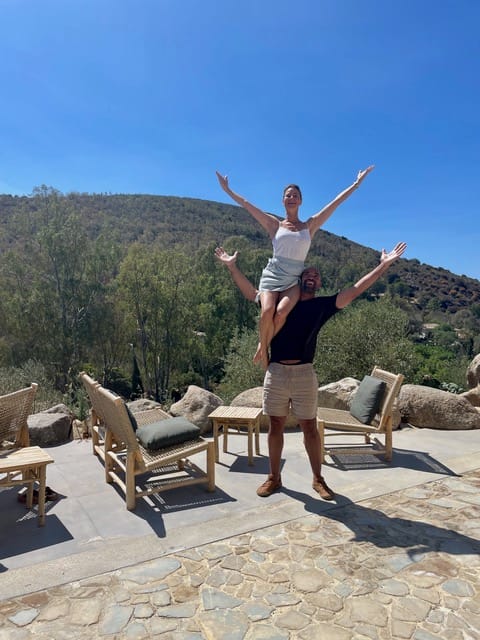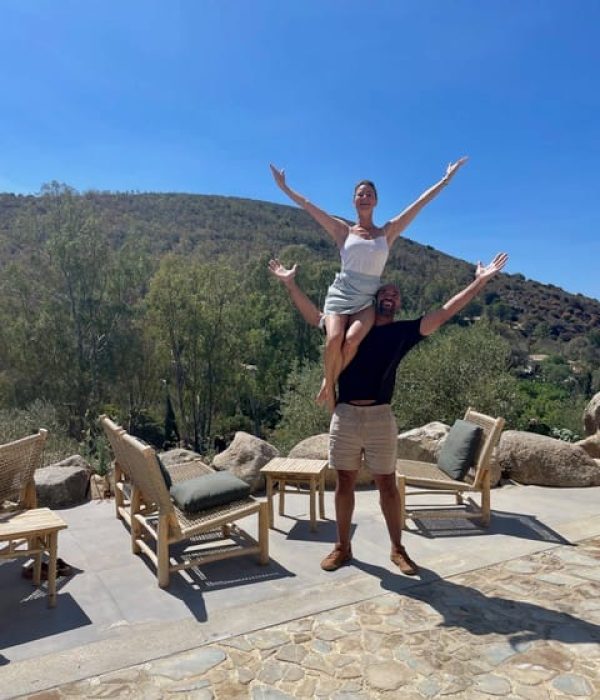From the dancefloor to leadership
Eldridge and Annemarie Labinjo van der Meulen are not only partners in life but also a powerful professional duo with a deep passion for dance, communication, and personal leadership. Once, they shared the stage as dancers with Scapino Ballet Rotterdam. Today, more than 25 years later, they are the parents of two daughters and active as master coaches, trainers, and founders of initiatives such as Move to Leadership, 1stMove, R.A.A.F. Danst, and the Dance and Creative Wellness Foundation.
By Ika Berman

“Dance is more than form. It is connection. And when you truly see each other, something greater than yourself can emerge.”
At the heart of all their work lies one core value: well-being—physical, mental, and social. Their conviction is clear: dance has the power not only to move but also to heal, connect, and transform. And that calls for conscious leadership.
From dancer to guide
“When I stopped dancing, I knew I wanted to continue working with people,” Annemarie recalls. “I had two young children and wanted to explore what my next step would be. The Dutch retraining program for dancers supported me wonderfully, but in the end, I had to answer the question myself: what do I truly want to contribute?”
Her answer lay in the power of expression, emotional intelligence, and human connection. She studied communication, behavior, and credibility analysis at the Emotional Intelligence Academy, part of Manchester Metropolitan University. She also trained as a master coach and founded 1stMove, where she uses dance to support people with chronic and neurological conditions. Later she established R.A.A.F. Danst, a foundation focusing, among other things, on young adults living with or recovering from cancer. “I wanted to understand: how do our bodies and brains work, and how can movement help people feel at home in themselves again?”
Eldridge followed a parallel path. After his dance career, he moved into theater, communication, and public speaking. Like Annemarie, he trained as a master coach and deepened his expertise in strategic leadership.
“Leadership requires empathy, communication, and the ability to create a safe space in which people feel free to grow.”
Leadership starts with listening
A recurring theme in their work is leadership. What does it mean to lead in a dance context, and how can leaders strengthen the well-being of those they guide?
“In the dance world, people often step into leadership roles because they are strong dancers or choreographers,” Eldridge explains. “But that doesn’t necessarily make you a good leader. Leadership requires empathy, communication, and the ability to create a safe space in which people feel free to grow.”
For him, safety means open dialogue, respect for boundaries, and the willingness to truly listen. “Dancers are both the instrument and the material. They want to serve, but that also brings the risk of boundaries being crossed, often unconsciously. Good leaders recognize that tension and take responsibility for the atmosphere they create.”
Annemarie adds: “Empathic listening is essential. Not listening to reply, but listening to understand. From that openness comes connection, and from connection comes safety.”
From drama to empowerment
One model they frequently use in training is Stephen Karpman’s Drama Triangle, which describes three ineffective roles people often take on under pressure: the persecutor, the victim, and the rescuer.
“In dance, especially in high-pressure environments, you see these dynamics all the time,” Eldridge says. “But opposite to that is the Empowerment Triangle, which we also use: the creator, the challenger, and the coach—roles that invite collaboration instead of drama.”
“Instead of blaming or rescuing each other, people learn to take responsibility, ask questions, and make space for each other’s perspectives,” Annemarie explains.
The power of intention
When asked what truly makes the difference in safe and connecting communication, they agree immediately: intention is everything.
“Before you even speak, your intention is felt,” Annemarie says. “You can say ‘I love you,’ but if your body tells another story, it doesn’t land as genuine. People feel that—especially in dance, where so much happens non-verbally.”
Eldridge continues: “Language is important, but it’s only one part of the message. Nonverbal cues—tone, pace, presence—stem from your intention. And intention determines whether someone feels safe to speak, move, or simply be still. Without it, your words are just performance.”
Vulnerable groups and safe spaces
Through the Dance and Creative Wellness Foundation, Eldridge works internationally to promote dance as both a preventative tool and as support for health and well-being. “We advocate for dance as part of the bio-psycho-social model of health,” he explains. “That means health is more than a medical status—it’s also about how you feel, your social connections, and your sense of purpose. Dance contributes uniquely to all of these.”
Safety—physical, social, and psychological—is at the heart of this work. “Together with organizations like IADMS, we’re working toward an international quality mark,” Eldridge says. “Not to impose more rules, but to let the sector itself define what safe practice looks like.”
In practical terms, this means no physical corrections without consent, predictable class schedules (such as adjusting timings for medication routines), and ongoing dialogue with participants about their personal boundaries.
Annemarie shares one unforgettable experience: “I once worked with a group of people with Parkinson’s in Italy. There was a man who was completely withdrawn—head down, no contact, his wife doing everything for him. But after five days of dancing with the group, he was transformed. He wore a suit, had gone to the barber, and radiated. When asked what had changed, he said about me: ‘When I looked into her eyes, I knew it was good.’ That’s the power of being seen. That’s where safety begins.”
Rethinking the system
If they could change one thing in the dance field?
“The narrative has to change,” Eldridge says. “Right now, too much focus is on the performance as the final product. But the process is just as important—for the dancers, the team, and the audience. A performance can only truly move people if the entire process is rooted in dignity.”
Annemarie adds: “Everyone in an organization matters—from the cleaner to the artistic director. Everyone carries each other. If you realize that, your whole way of working changes. We call it the art of holding space: creating room while holding one another. And that begins with young dancers.”
Organizations also have a role here, Eldridge emphasizes. “Maybe this is exactly where an initiative like Dans Veilig can make a difference: by helping renew the narrative around leadership. Not by imposing it, but by raising awareness. From there, real change can grow. The key is a culture where well-being, values, and safe structures are as natural as artistic quality.”
One school already leading the way is the Mosa Ballet School in Liège. “They integrate nutrition, self-care, mindset, and values into their training. They show that dance education can be healthier, safer, and richer,” Annemarie notes.
Looking into each other’s eyes
Through projects like Twee in Beweging, Eldridge and Annemarie now coach young people aged 12 to 27 in their personal development through dance and dialogue. Each session begins with a check-in: “How are you feeling today?” and ends with a check-out: “What worked for you, and what needs more attention?”
Simple? Yes. And powerful. Because only when people’s real stories are given space, true safety can emerge. And from safety comes growth.
Their message is clear: it’s time for a dance world that is not only artistically excellent but also emotionally intelligent.
As Annemarie puts it: “Dance is more than form. It is connection. And when you truly see each other, something greater than yourself can emerge.”
Would you also like to share your story? Let us know by sending us an email or a message through our social media channels.
Have you experienced situations yourself that you feel were inappropriate?
Talk about it and report it. Even if you’re unsure. Help is available. For more information, visit the Help and Advice page.
